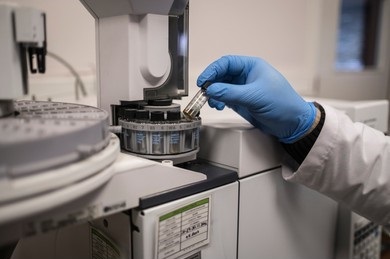Waste generally includes the production, life, and other activities generated in the loss of the original use of value or not lost but abandoned or abandoned solid, semi-solid, and gaseous in containers and the provisions of waste management into the goods.

Any waste has one or more hazardous characteristics is classified as hazardous waste, including combustibility, corrosiveness, reactivity, toxicity, explosiveness, infectivity, and other factors. If improperly disposed of hazardous waste, it will pollute the atmosphere water, soil, spread disease, and threatening human health.
To prevent waste from polluting the environment, it is essential to identify hazardous waste. Lifeasible can test the properties of waste according to specific criteria and a variety of methods (qualitative analysis). Our tests provide scientific and accurate research of the hazardous properties of waste. Therefore, they can be used as a reference for developing of waste disposal methods.
Due to the wide range of hazardous properties, from a practical point of view, Lifeasible offers detection for corrosiveness, ignitability, toxicity, and the content and characteristics of the metallic elements present in the waste.
Commonly used analytical techniques include EDX, FTIR, and Pyro-GC-MS. Among these methods, qualitative and quantitative analysis of elemental composition using EDX (energy-dispersive X-ray spectroscopy), which can perform rapid and non-destructive analysis; FTIR (Fourier-transform infrared spectroscopy) and Pyro-GC-MS (pyrolysis-gas chromatography-mass spectrometry) for the detection of polymer materials. In addition to this, Lifeasible also combines other analytical tools such as AAS (atomic absorption spectroscopy), ICP (inductively-coupled plasma), ICP-MS (inductively coupled plasma mass spectrometry), GC (gas chromatography), LC (liquid chromatography), UV (ultraviolet), etc. for the detection of toxic and hazardous substances in waste.
Lifeasible not only has conventional instruments and equipment such as chromatography, mass spectrometry, and spectroscopy but also has EDX, XRD (X-ray diffraction), XRF (X-ray fluorescence), etc., forming a rapid qualitative analysis technology system for waste, providing a rich and complete line of detection for waste identification and detection. The wholeentire system also further shortens the waste identification cycle, enabling us to provide technical services for waste management, emergency monitoring, risk characterization, and environmental risk assessment. Combining our instrumentation and various testing technologies effectively helps our customers. conduct waste characterization and hazardous waste identification. For more information, please get in touch with our staff, they will be the first to answer any questions about waste detection and identification.